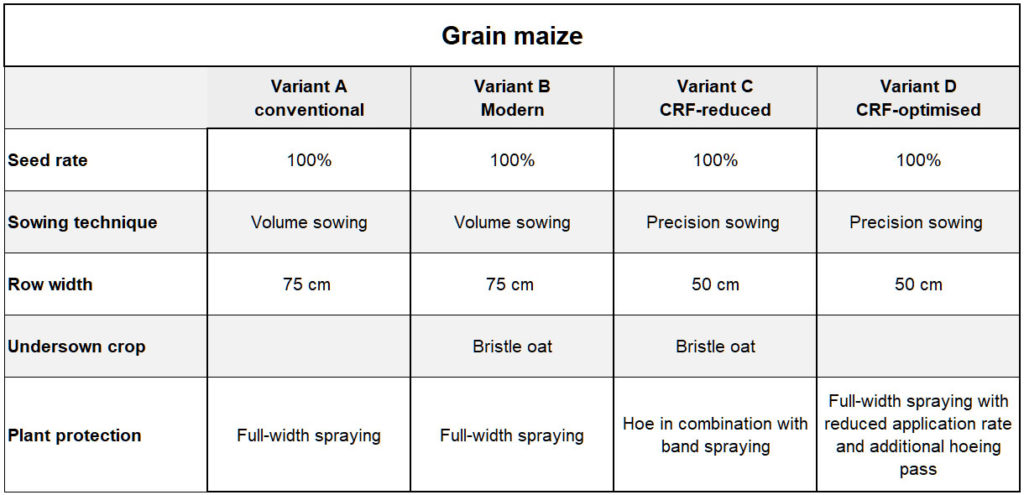Crop season plan 2022
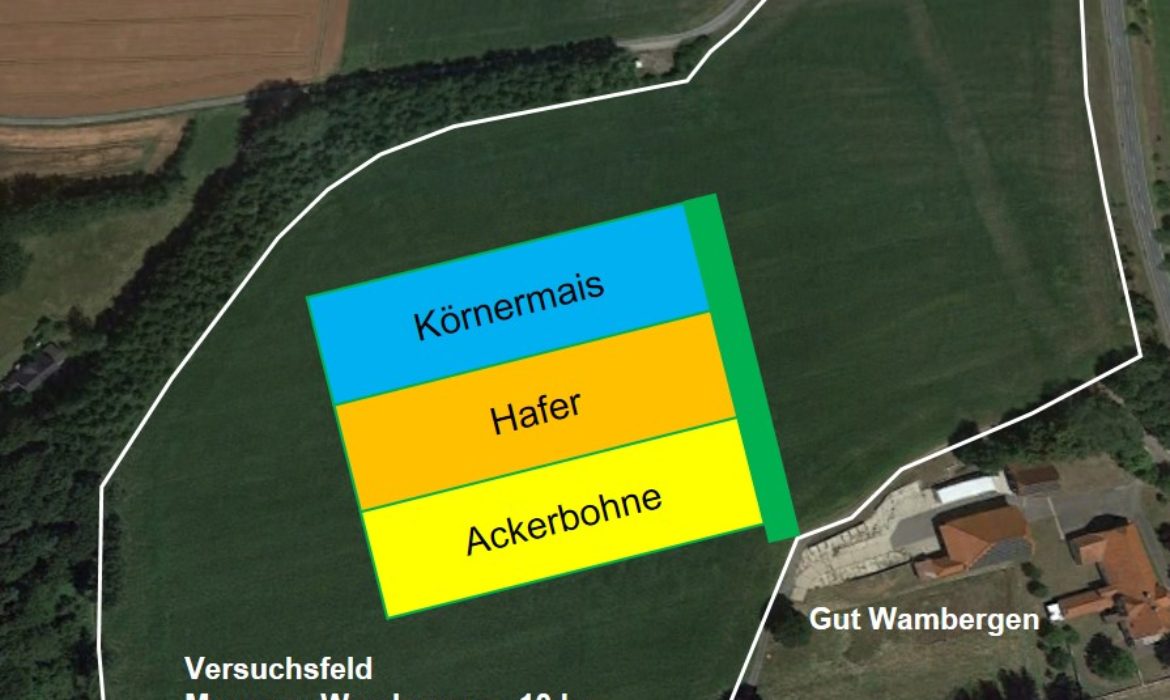
Three summer crops will be grown in the cultivation year 2022: broad beans, oats and grain maize. The plots were restructured, and a uniform basis was created with a plough furrow.
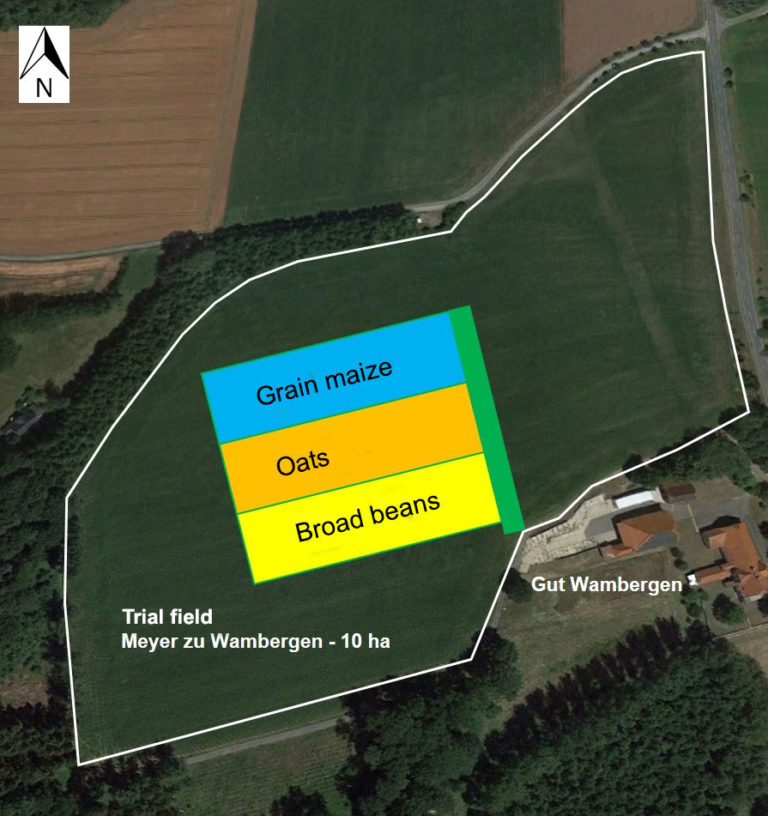
Broad beans and oats will be sown with a Centaya drill combination with a 12.5 cm row width in the standard variant. The row width will be doubled to 25 cm in the modern variant. The sowing rate of the oats and broad beans will be reduced by 1/3, so that the seed gaps in the row are not too small. The seed rate will not be varied for maize since the individual plants cannot tiller and compensate for this.
The reduced seed rates will also be used in the two CRF variants. The distribution in the field is the only difference, because two rows are closed in the CRF system and a double row is then sown with 12.5 cm. We have reduced the seed rate of winter cereals by 50% in the modern variant and the CRF variants in recent years – with good results (see winter barley 2021).
The CRF variants will also be sown as double rows with the drill combination for oats. This would also be possible with the broad beans. We thought it would be more interesting to sow 50 cm rows with a precision air seeder. We will see how the crops develop with the same seed rate compared to the modern variant.
We decided to use red clover as a companion crop in the oats in the reduced CRF variant. The red clover will be sown as early as possible in combination with band spraying. It is vigorous and should establish itself intensively. Mechanical reduction with a row-specific roller will be possible if it endangers the maturation of the oats.
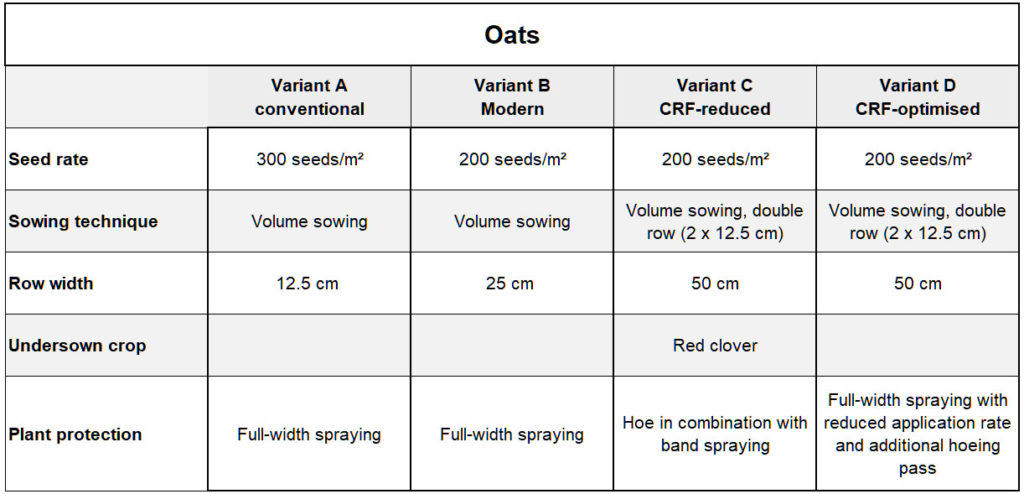
The pre-emergence spraying in the broad beans will be provided by band application. Persian clover will be sown in the first hoeing pass. This is a low-growing crop and should not disturb the broad beans too much until harvest. Reduced crop protection treatment will be applied over the entire area in the optimised CRF variant, in order to give the broad beans a head start. The hoe will potentially be applied twice, in order to suppress weed competition.
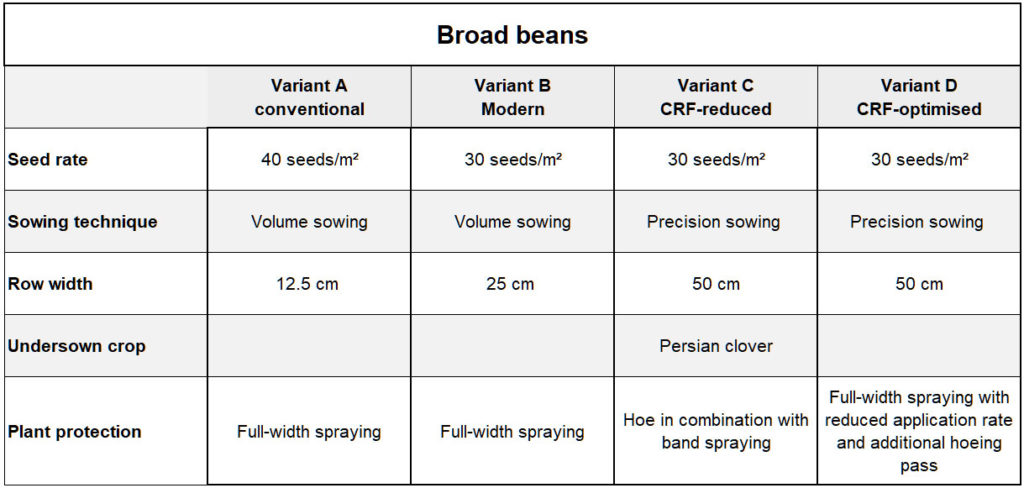
The Precea precision air seeder will be used to sow the grain maize at 75 cm in both the standard variant and the modern variant. The seed will be sown at 50 cm in the two CRF variants.
The herbicide will be applied in the modern variant with a reduced amount of soil herbicide, in order to permit an undersown crop. As hardy ryegrass could become problematic in the crop rotation, bristle oat was selected as a frost-intolerant undersown crop. The undersown crop increases biodiversity and improves accessibility during the harvest. The mulch offers good protection against erosion over the winter.
The full herbicide mixture in the CRF-reduced variant is used in the same way as in the conventional variant but will be applied by band spraying. It will be interesting to see whether the bristle oat undersown crop develops better in the herbicide-free intermediate area than in the modern variant.
A full-area, somewhat weaker herbicide mixture will be used in the CRF-optimised variant, in order to give the maize a head start. Depending on the weather conditions, 1-2 additional passes will be made with the hoe.
